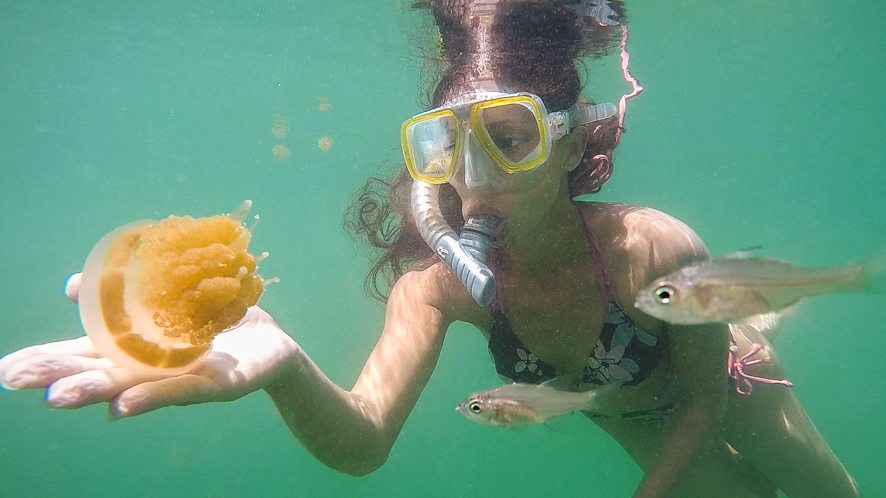
Indonesia: Swimming with stingless jellyfish
Kakaban island is part of the Derawan island, situated on the east side of Borneo. It’s a 774 hectares limestone island covered with dense jungle. It’s a protected and inhabited island (so no accomodation) that you can access to by paying an entrance fee of Rp 20,000.
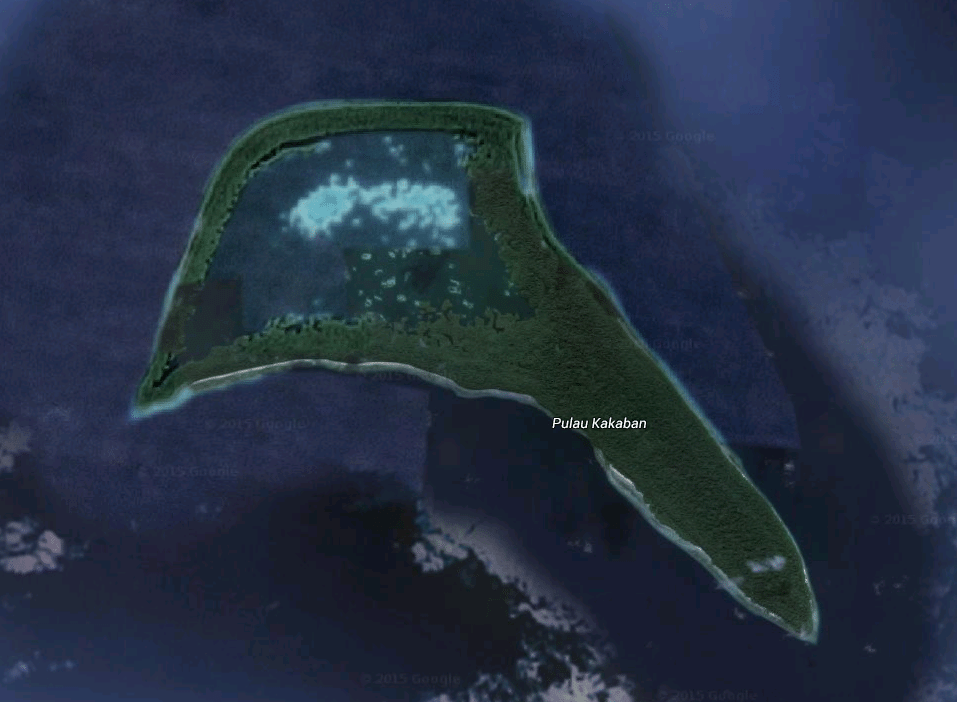
In local dialect, Kakaban means “hug” as it looks like it is hugging the lake away from the sea.
The lake is actually the main reason why people go to Kakaban. It protects many species and is considered for UNESCO nomination as a World Heritage Site (because of endemic jellyfish, fish and crustaceans). But the main attraction is the four species of jellyfish. You can swim with millions of jellyfish in the brackish water of the lake, surrounded by mangrove forest. Lucky, they are harmless. Without predators, they have evolved to become stingless.
Why go swim with the jellyfish of Kakaban?
First because it’s an unusual and rare experience. There are only 3 places like this in the world: on Kakaban island, in Indonesia, the Togean islands, in Indonesia too, and on Rock Island, in Micronesia. But Kakaban is the only place with that many species of stingless jellyfish.
Once on Kakaban, you need less than 10 minutes walk to get to the lake. From there you start to spot small fish and some jellyfish.
Once in the water, the first few minutes are really bizarre. Your instinct makes you stay away from those creature. As time goes by and as you go further you start getting used to them. That’s when you start touching them… timidly at first, and it quickly becomes natural until you forget about your apprehensions and end up surrounded by them.
The water of the lake is clear towards the top but more milky as you look down, which reduces the visibility. It seems the jellyfish come from all sides, dancing through the sunlights, graciously.
It’s hard to stay calm when one touches your leg when you’re not expecting it. Even knowing they can’t sting, your brain takes a while to digest they won’t hurt you.
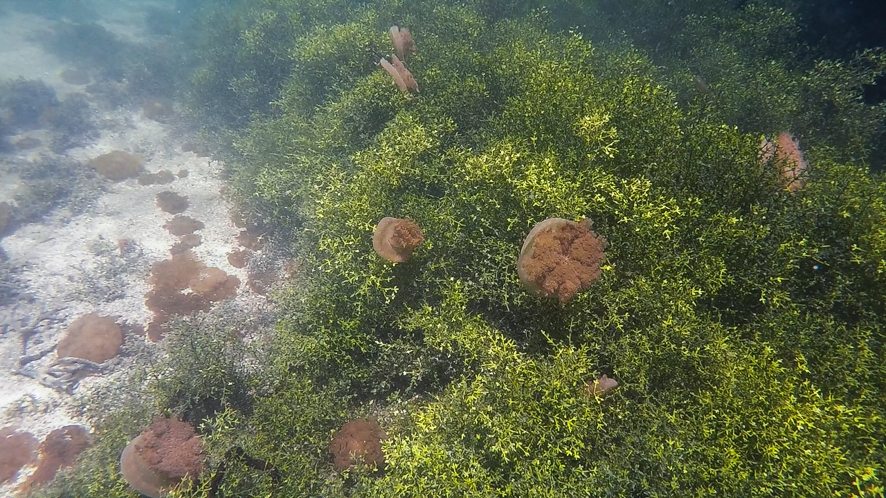
Last picture of a jellyfish :
We spent over an hour in the water in order to make the most out of this surrealist experience.
Oh and before leaving, swim towards the mangroves on the right side of the lake. You’ll find plenty of colorfoul sponges.
As you’re ready to leave, listen to those in the lake, shouting through their snorkel out of surprise.
How to get to the jellyfish lake?
To encounter those jellyfish, you will first need to get to Derawan, on the island of Borneo. We wrote a post with all the information you need to get the Derawan islands.
Once on the archipelago, a speedboat can take you to and around Kakaban for half a day. Here’s some information on travel times:
– 45 minutes from Maratua
– 30 minutes from Derawan
– 20 minutes from Sangalaki
Even if there isn’t any real organised tour, it is fairly easy to do a one day trip to visit the 3 main attractions : Sangalaki, Kakaban and Maratua. Your guesthouse can help organise that:
– if you’re on Derawan island, Lestari, from Losmen Lestari, can help (it’s between Rp 1,3 and 1,5 Million)
– if you’re on Maratua island, Jun from Maratua guesthouse, can organise a boat (1,5 Millions)
Speedboats can usually accomodate 4 people, plus the captain! Don’t hesitate to group with other travellers to reduce the cost.
Tips to get the maximum out of this experience
– don’t hesitate to go further into the lake to be surrounded by jellyfish
– try diving to fully be surrounded by jellyfish
– gently touch the jellyfish
– try to spot the 4 different types of jellyfish
– take the time: check out the colourful sponges in the surrounding mangroves and try spotting nudibranches
– note that there are toilets after the entrance
Tips to limit your impact on the island
– don’t bring your fins to the lake (only the mask and snorkel)
– if you’re making several stops, ask if you can visit the Kakaban lake first for the reasons below:
1. to avoid putting sunscreen on before you swim with the jellyfish. Most guides won’t mention it but it pollutes the water and harms the jellyfish. If you’re very sensitive to the sun, put a T-shirt on while you’re in the lake. And put sunscreen once done for your next stop 🙂
2. By going to the lake first, you reduce the chances of bringing foreign micro-organisms that could be harmful into the lake
– when you’re done playing in the lake, don’t leave Kakaban without snorkelling around the island. The coral is beautiful.
If you’re thinking about going to Indonesia, don’t miss this amazing experience.
We leave you with a short video to conclude this post:
And we made a video montage, you can check it out here.
Have fun with the jellyfish!


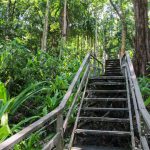
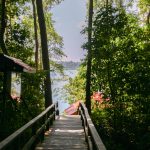
![[:fr]Le lac de Kakaban[:en]Kakaban Lake[:]](https://lebigtriptravel.com/wp-content/uploads/2015/06/IMG_4178-150x150.jpg)
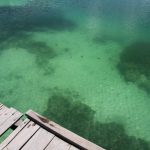
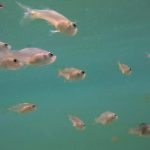
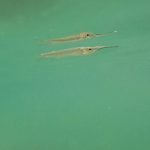

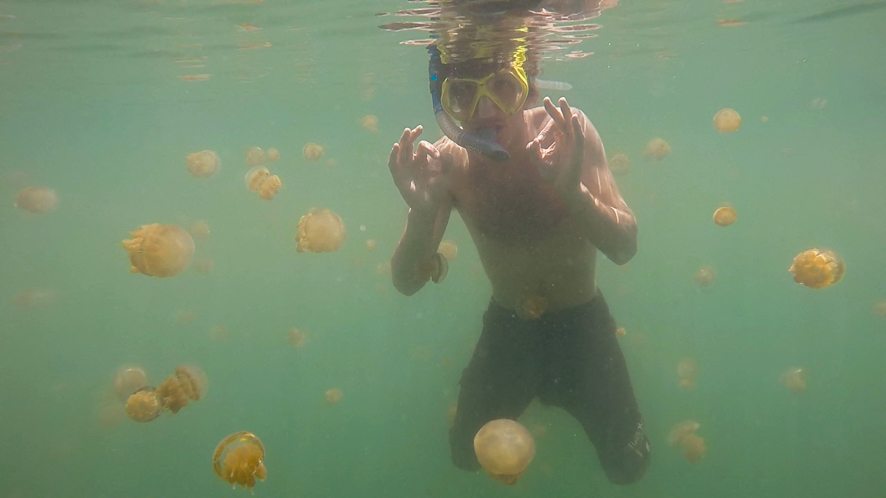
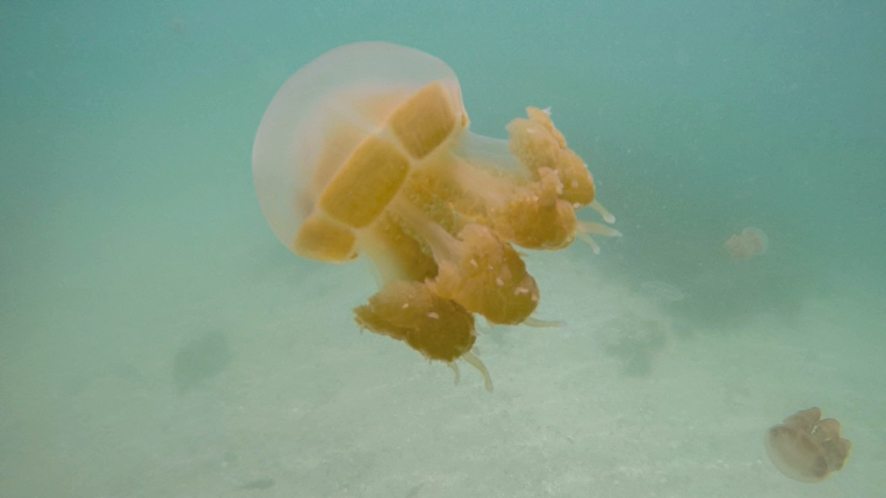
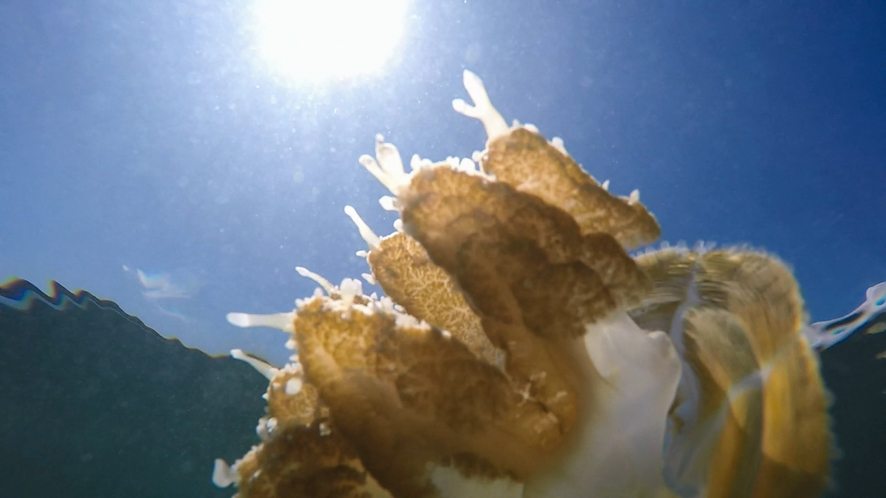
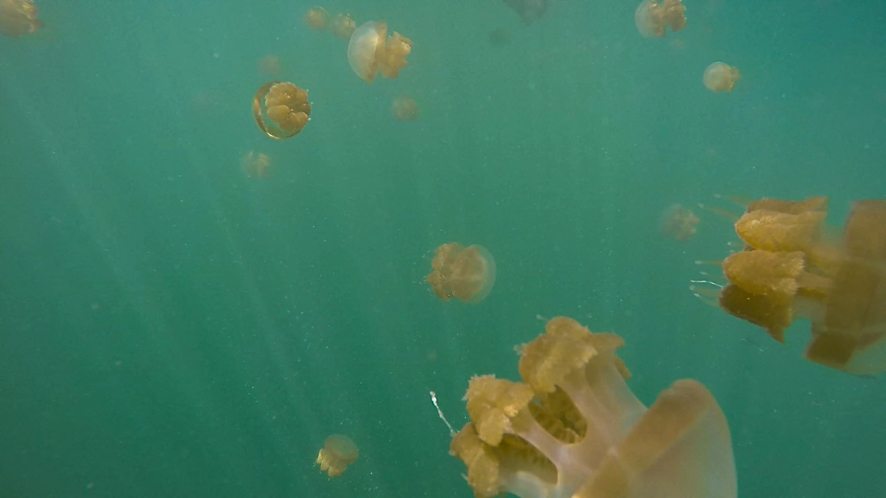

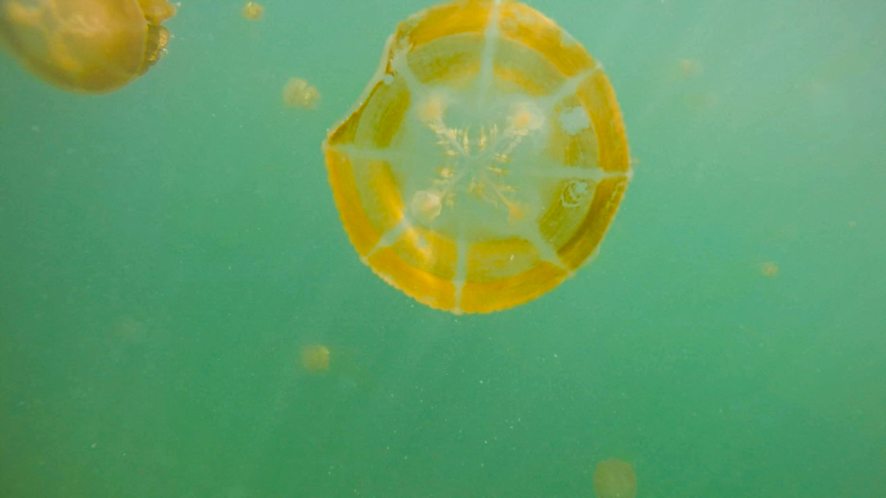
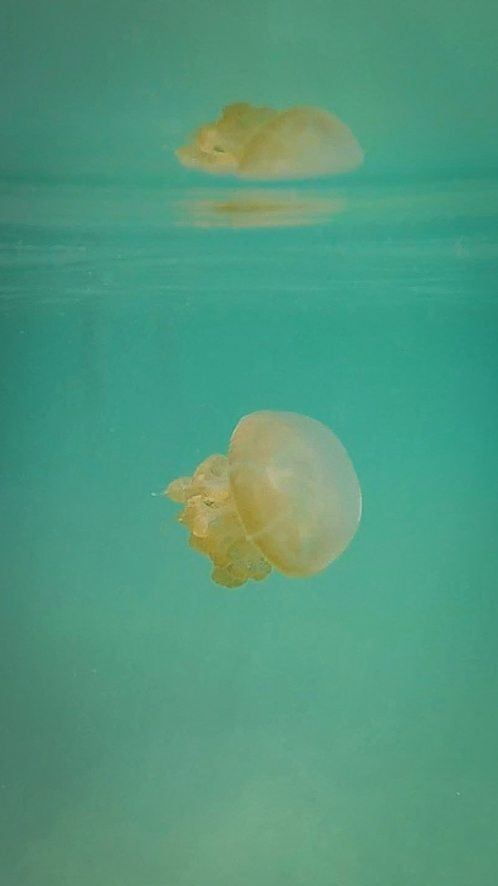

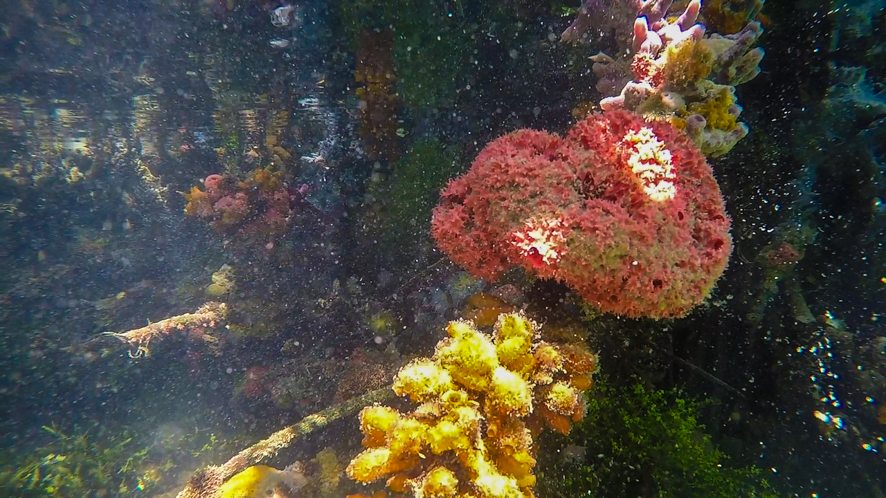



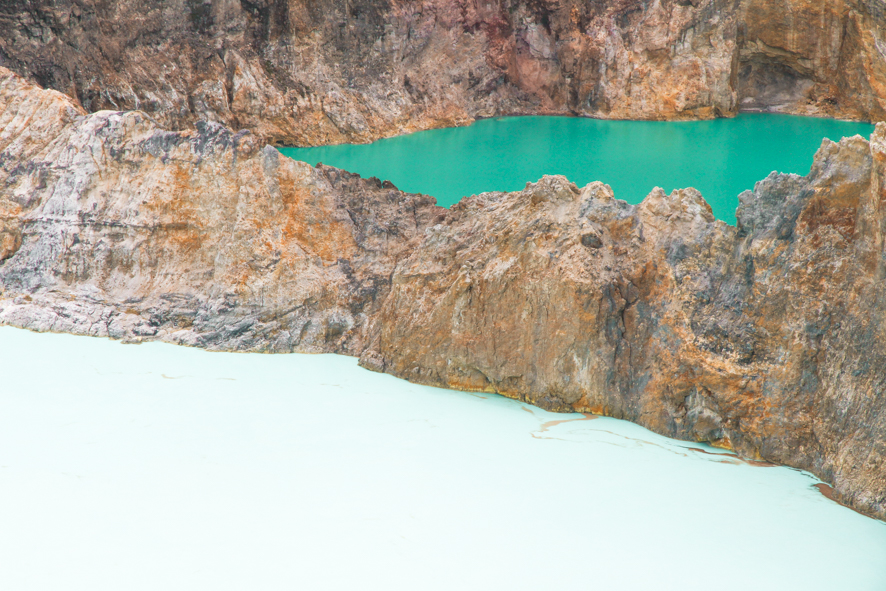
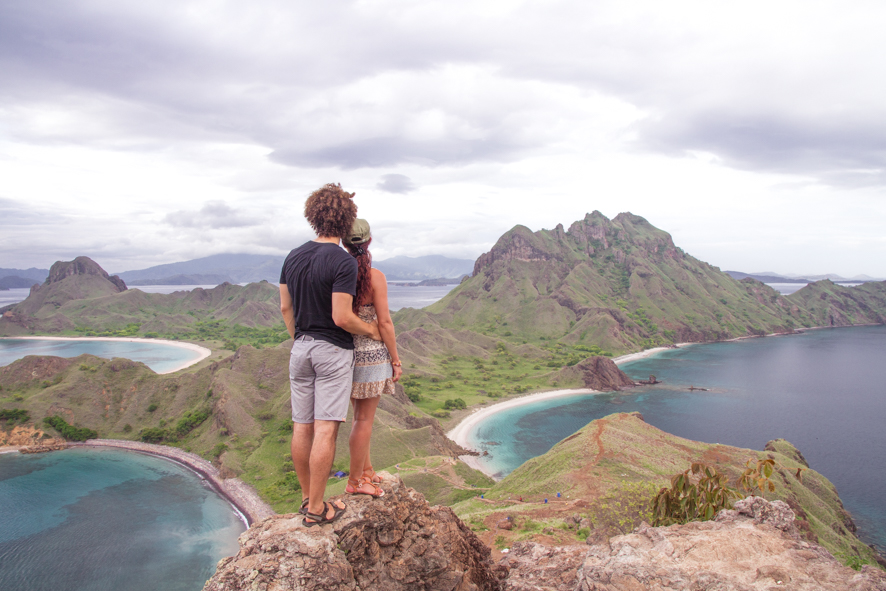
Laura
Hello,
I am planning to get to kakaban island and Kalimantan island. The thing is that I can’t find the way to get there coming from tawau that’s not flying. Any tips?
Thank you, love your blog 🙂
Laura
rafika
Yes!! it’s a long trip but doable. more info on our blog about how to get to Derawan.
https://lebigtriptravel.com/plan-travel-derawan-kalimantan
Make sure you get more info once in Tawau as things change quickly!
Claire
Just commenting to follow your blog 🙂 Wish we had time to go to Kalimamtan during our next trip :/
rafika
Hi Claire
Kalimantan is an amazing place. I hope you’ll get a chance to go. We really want to go back and discover more of the island.
I see you’re going to Jakarta soon. We haven’t been yet but it really seem great. Enjoy
Tugdual
Même si on sait qu’elle ne peuvent faire mal, ça reste assez impressionnant à première vue ! Je pense qu’il faut un petit temps d’adaptation avec de pouvoir aller se faire encercler les yeux fermés. Superbe expérience merci pour le partage !
rafika
Merci pour ton message Tugdual ! C’est vraiment une expérience incroyable. C’est vrai que les premières fois où elles m’ont touchées je criait et riais nerveusement. Mais on s’y habitue vite.
Je te recommande vivement d’aller à la rencontre de ces méduses si tu en as l’occasion.